![]()
![]()
![]()
(Full index of popular Covert Shores articles)
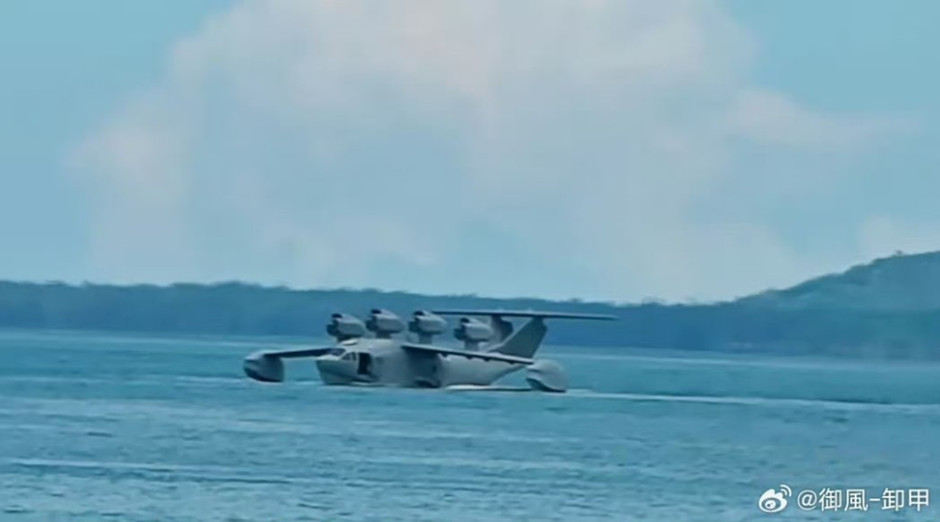
Image from Chinese social media
South China Sea Monster: New Chinese Ekranoplan (WIG)
 China continues to be able to develop new military systems in almost complete secrecy. Images shared on Chinese social media, almost certainly sanctioned 'leaks', reveal a new 'Ekranoplan' being tested. The aircraft remains a mystery, so here are some further observations following my initial report on Naval News. See also my YouTube video on this topic.
China continues to be able to develop new military systems in almost complete secrecy. Images shared on Chinese social media, almost certainly sanctioned 'leaks', reveal a new 'Ekranoplan' being tested. The aircraft remains a mystery, so here are some further observations following my initial report on Naval News. See also my YouTube video on this topic.
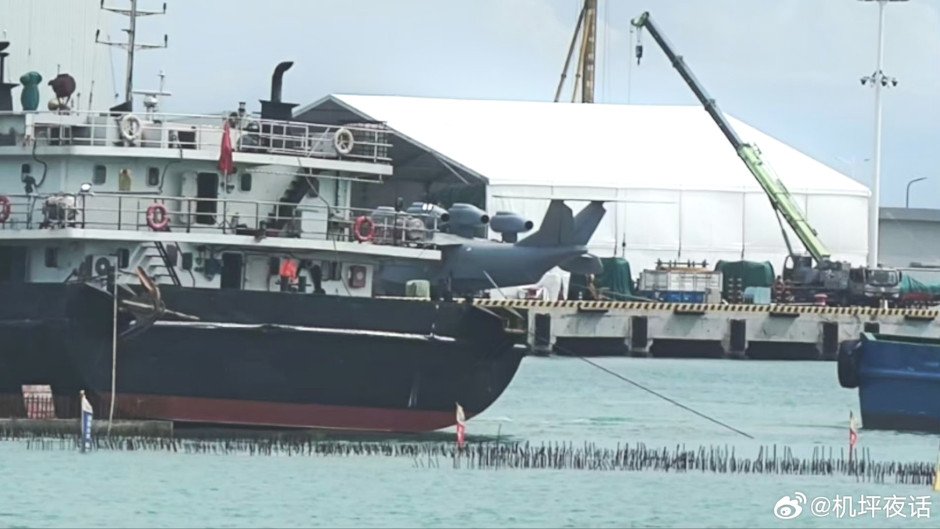
Image from Chinese social media. This was the first one of this WIG.
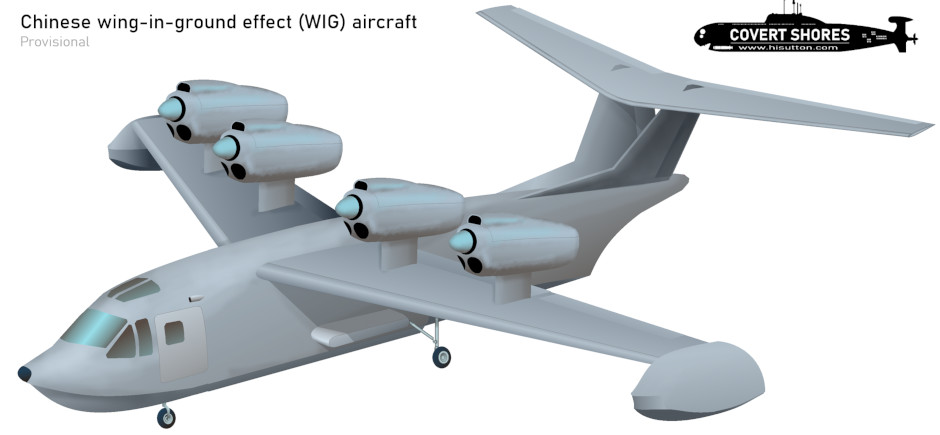
Asrtist's impression of the new unexplained WIG
Geolocation of testing
The available images reveal that the new WIG is being tested at Yazhou Bay, west of Sanya on Hainan (vicinity 18.3181°, 109.1429°). There is a road-mobile crane there, almost certainly used for lifting the WIG in and out of the water. The white temporary hangar seen in the background of the first image was erected around April 21, 2025 and removed in the days after June 27, 2025. This is the exact same pier that the Xiangzhou-1 WIG was being flown from earlier this year. It now seems possible that the latest rounds of Xiangzhou-1 testing were in some way related to this new WIG.
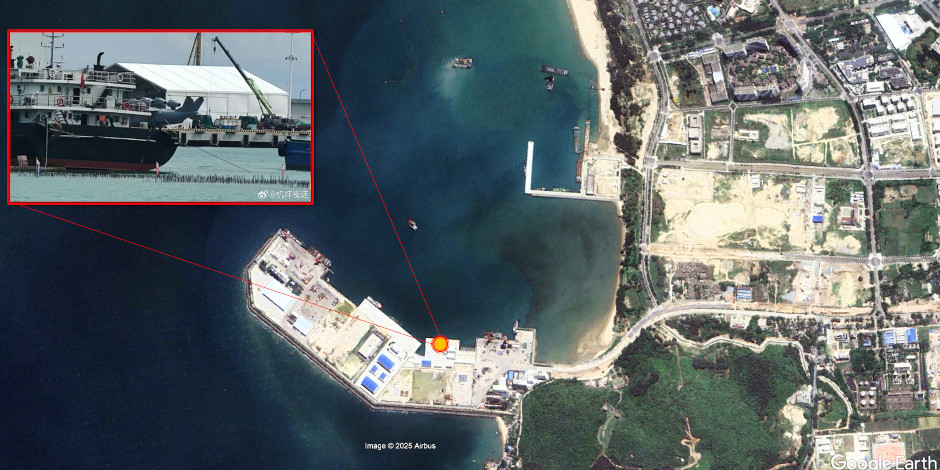
The pier seen on Google Earth for reference (this satellite image is from July 1, 2024, and does not show the latest developments at the pier).
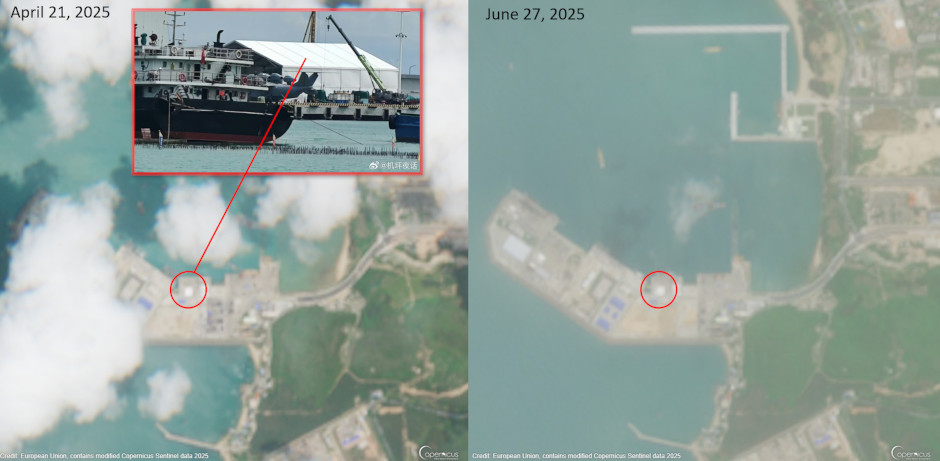
The white hangar is visible in publicly available Sentinel-2 low-resolution satellite imagery. It was removed soon after the second image.
Ekranoplans - WIG
Ekranoplans, more properly known as Wings In Ground Effect (WIG) (“Ekranoplan” is the Russian term but it stuck), are a type of aircraft optimised to fly extremely low, generally much lower than the width of their wingspan. This reduces drag and creates a ‘cushion’ of air similar to a hovercraft, making the aircraft more efficient. For practical purposes this works better over water where you don’t have to worry about uneven ground and trees or buildings (or pedestrians).
Functional ekranoplans were first developed by German aircraft designer Alexander Lippisch. Famous for developing the rocket powered Messerschmitt Me-163 Komet during World War Two, he moved to the US after the war and developed WIG. Lippisch’s designs remained small and experimental. The concept was taken much further by Soviets however.
During the Cold War the USSR built the famous ‘Caspian Sea Monsters’ . Not wanting to start small, the first main design, the Ekranoplan-KM, was the largest aircraft ever built (from 1966 until displaced by the Antonov An-225 Mriya in 1988). It was followed by the more practical A-90 transport and Lun missile armed versions. The Lun was particularly menacing. But the end of the Cold War killed these expensive beasts, which never really progressed beyond experimentation.
China picked up WIG development in the 1990s with the XTW-4 flying in around 1999. It’s designed owed much to the reverse delta layout pioneered by Lippisch. Tests continued for several years with some airframes associated with the Chinese military. Since then WIG development in China has been modest and sporadic, with designs being civilian in nature. This latest WIG changes that.
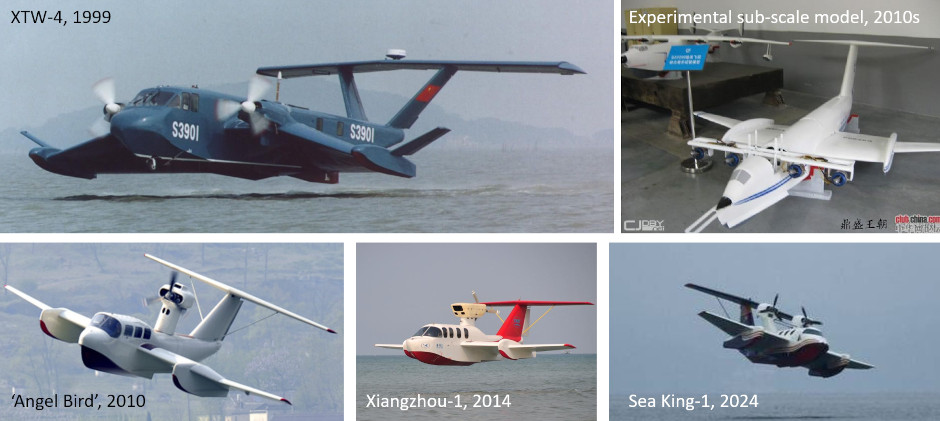
Chinese WIG projects
Design
The aircraft is marked by the extra-large tail plane which is characteristic of WIG. This is mounted atop twin vertical stabilisers, also a feature unseen in regular aircraft yet common in Ekranoplans. This allows us to immediately identify it as a WIG.
The new design differs from most other ekranoplans in that the wing is high-set, slightly swept, and wider than many. This may be less optimised for ground effect but will also allow it to fly higher with better efficiency. It’s not unique among historic designs (the Soviet VVA-14 comes to mind, as does the American Pelican and now cancelled Liberty Lifter concepts), and should still be described as a WIG.
It has four engines mounted as pods on top of the wing. These were initially identified as jet engines due to their large exhausts (visible in the first image) and lack of any visible propellers. A second photograph, from a forward angle, looks like they are in fact propeller engines. However the propellers themselves are not visible. Possibly they are jets, but with spray guards, a configuration used on the Soviet Ekranoplan-KM. It is also worth noting that they look not dissimilar to the piston engine (or turboprop?) on the earlier experimental 'Angel Bird' WIG.

The two available images, with the engine pod of the 'Angel Bird' inserts.
The aircraft is quite large for a modern WIG, approximately the size of a business jet. It has few windows but a large door on the forward port side of the fuselage (the starboard side hasn’t been seen yet). Together with the military grey paint scheme (Chinese WIG are normally in civilian colours), this suggests a special transport.
Related articles (Full index of popular Covert Shores articles)

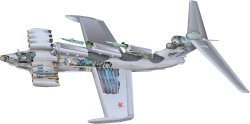 Lun Class Ekranoplan (Wings in Ground Effect) w/Cutaway
Lun Class Ekranoplan (Wings in Ground Effect) w/Cutaway

 Chinese Navy's Advanced Submarine Type-039C Yuan Class. w/Cutaway
Chinese Navy's Advanced Submarine Type-039C Yuan Class. w/Cutaway

 Chinese Sea Wing UUV (Glider)
Chinese Sea Wing UUV (Glider)
 Armored Stealth Boat used for car smuggling by Chinese organized crime. w/Cutaway
Armored Stealth Boat used for car smuggling by Chinese organized crime. w/Cutaway
